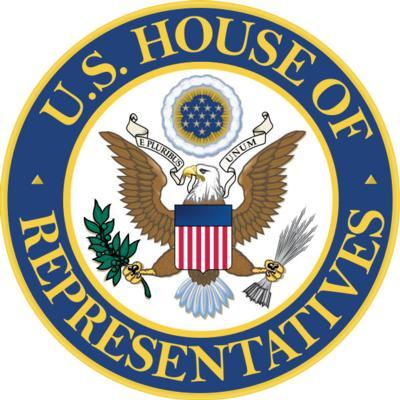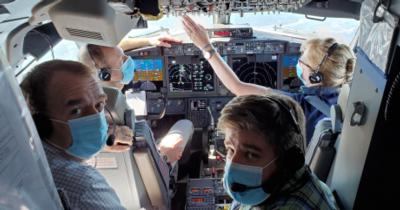Those Pinnacles of Aviation Expertise, the US House, Hammer Boeing and the FAA -- Again
A long awaited report from the House of Representatives Committee on Transportation & Infrastructure has been published and as many government reports are wont to do, they place a lot of blame... but not always prioritized according to the realities of the situation at hand.

While the politicians were patting themselves on the back generously, the report fails to prioritize the ponderous issues involved with the airlines (and the training issues associated with them), that the airlines involved in the two accidents, presented. It also makes sweeping judgments about improper/fraudulent intent on the part of Boeing and the FAA when the aero-community scuttlebutt insists that (in many cases) such malevolent intentions were not truly evident -- i.e., they may have screwed up, but it was through error, careless and such rather than outright intent to deceive, defraud and the like.
The 13 page report's 'Preliminary Investigative Findings Conclusion' state that, "Boeing’s design and development of the 737 MAX was marred by technical design failures, lack of transparency with both regulators and customers, and efforts to obfuscate information about the operation of the aircraft. During development of the 737 MAX, Boeing engineers raised safety concerns about MCAS being tied to a single AOA sensor. Another Boeing engineer raised concerns about not having a synthetic airspeed sensor on the 737 MAX.

In the wake of the Lion Air and Ethiopian Airlines tragedies, Boeing has now acknowledged some of these issues by planning to have two AOA sensors feed into MCAS, for instance. In January 2020, despite the fact that Boeing’s internal directive for the 737 MAX program made crystal clear that nothing should jeopardize Level B non-simulator pilot training requirements, Boeing reversed course by recommending that pilot simulator training on the 737 MAX will be needed before it returns to service. Boeing’s responses to safety issues raised in the 737 MAX program have consistently been too late.
The Committee’s investigation has also found that the FAA’s certification review of Boeing’s 737 MAX was grossly insufficient and that the FAA failed in its duty to identify key safety problems and to ensure that they were adequately addressed during the certification process. The combination of these problems doomed the Lion Air and Ethiopian Airlines flights.
In the weeks after the Lion Air crash, Boeing defended its development of MCAS to the FAA, writing that there was “no process violation or non-compliance” on multiple issues, including: removal of reference to MCAS from the FCOM; Boeing’s evaluation of “repeated unintended MCAS” activation; the fact Boeing did not evaluate “loss of one AOA followed by erroneous AOA” in the simulator; and the fact that the analysis Boeing did conduct was “completed prior to the design change to MCAS control law.”
The fact that multiple technical design missteps or certification blunders were deemed “compliant” by the FAA points to a critical need for legislative and regulatory reforms. Developing a transport category commercial aircraft that is compliant with FAA regulations but fundamentally flawed and unsafe highlights an aviation oversight system in desperate need of repair.

These preliminary investigative findings make clear that Boeing must create and maintain an effective and vigorous safety culture and the FAA must develop a more aggressive certification and oversight structure to ensure safe aircraft designs and to regain the confidence of the flying public. We hope these preliminary findings will help pave the way for legislative reforms as the Committee’s investigation continues to identify the actions and events that undermined the design, development, and certification of the 737 MAX aircraft and led to the tragic death of 346 people."
The scary part of this document is that it eventually seems to fall back on legislative reforms as being necessary to solve all future ills... and the track record for that mindset, and its associated histories, are not a good one.
The report, in its entirety, is linked below...



 ANN's Daily Aero-Linx (04.15.24)
ANN's Daily Aero-Linx (04.15.24) Classic Aero-TV: 'No Other Options' -- The Israeli Air Force's Danny Shapira
Classic Aero-TV: 'No Other Options' -- The Israeli Air Force's Danny Shapira Aero-News: Quote of the Day (04.15.24)
Aero-News: Quote of the Day (04.15.24) Airborne 04.16.24: RV Update, Affordable Flying Expo, Diamond Lil
Airborne 04.16.24: RV Update, Affordable Flying Expo, Diamond Lil ANN's Daily Aero-Term (04.16.24): Chart Supplement US
ANN's Daily Aero-Term (04.16.24): Chart Supplement US








